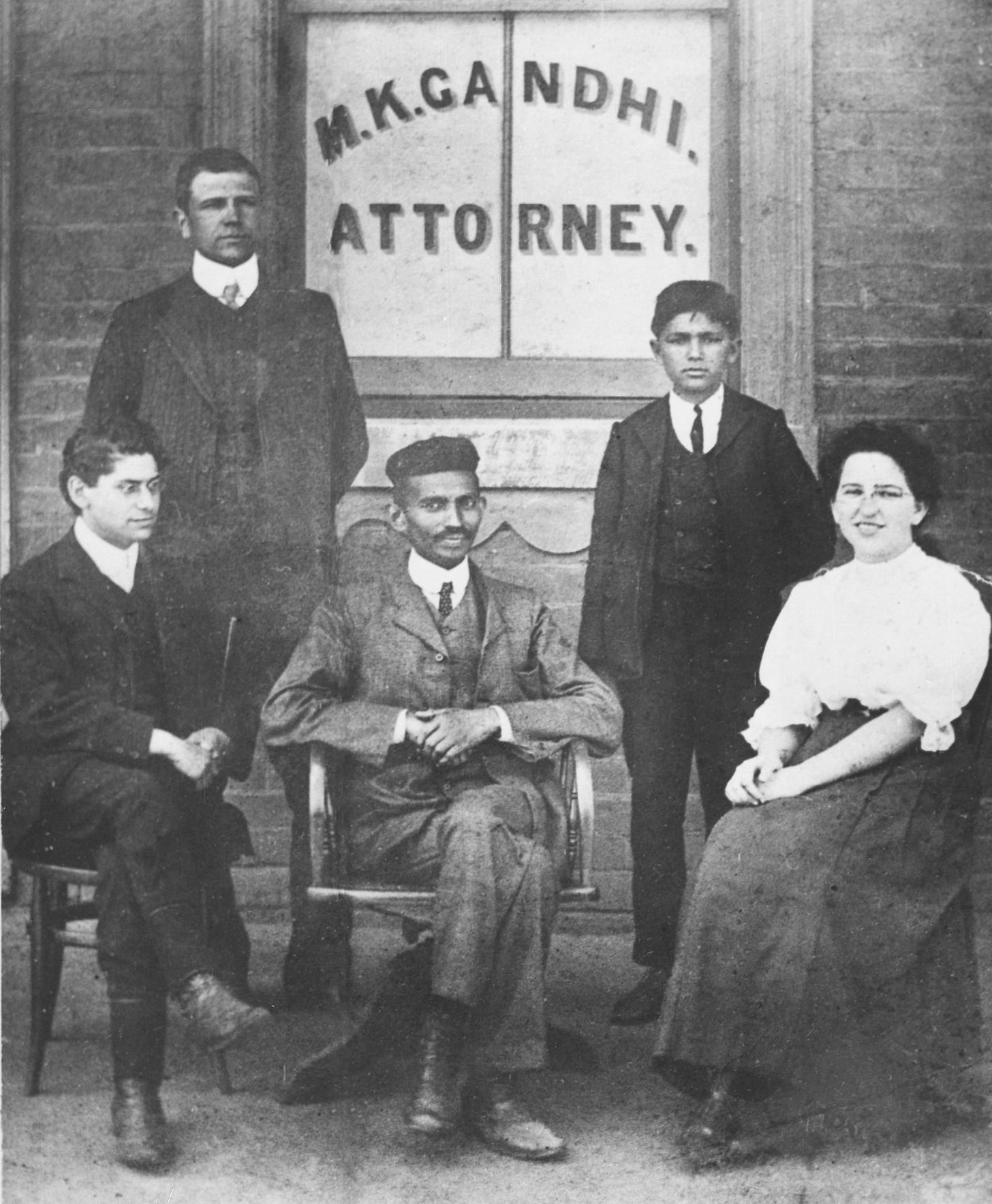Mohandas Gandhi and the Theosophists, the Plymouth Brethren, and the Ruskinites
Scene 3 – The Theosophists, Johannesburg, 1903
Mohandas Gandhi and the Theosophists, the Plymouth Brethren, and the Ruskinites
Scene 3 – The Theosophists, Johannesburg, 1902
In 1901, Gandhi left South Africa and returned to India where he attended the Indian National Congress at Calcutta. Afterwards, Gandhi wanted to see India for himself, and he travelled to Benares, Agra, Jaipur and Palanpur, on his return trip to Bombay.
[from ‘The Story of my Experiments with Truth’, Part II, Chapter XIX]
“I planned to go first to Benares to pay my respects to Mrs. Besant, who was then ill.”
[from ‘The Story of my Experiments with Truth’, Part II, Chapter XX]
“After this visit to the [Kashi Vishvanath] temple, I waited upon Mrs. Besant. I knew that she had just recovered from an illness. I sent in my name. She came at once. As I wished only to pay my respects to her, I said, ‘I am aware that you are in delicate health. I only wanted to pay my respects. I am thankful that you have been good enough to receive me in spite of your indifferent health. I will not detain you any longer’. So saying, I took leave of her.”
Gandhi wished only to pay his respects to Mrs. Besant and stayed for one minute – hardly enough time to become acquainted with her.
Gandhi returned to South Africa in 1902, to present a memorial to Joseph Chamberlain during his visit at the end of the Boer War. Gandhi then set up his office in Johannesburg, with the help of Mr. Ritch, a Theosophist.
[from ‘The Story of my Experiments with Truth’, Part III, Chapter III]
“It was difficult for an Indian to secure rooms for office in a suitable locality. But I had come in fairly close contact with Mr. Ritch, who was then one of the merchants there. Through the good offices of a house agent known to him, I succeeded in securing suitable rooms for my office in the legal quarters of the city, and I started on my professional work.”
Gandhi said that he never became a member of the Theosophists, and he seems not to know about the inner circle of mystical adepts, but only about the nicey-nicey public image of brotherhood of all religions.
[from ‘The Story of my Experiments with Truth’, Part III, Chapter IV]
“Mr. Ritch was a theosophist and put me in touch with the society at Johannesburg. I never became a member, as I had my differences, but I came in close contact with almost every theosophist. I had religious discussions with them every day. There used to be readings from theosophical books and sometimes I had occasion to address their meetings. The chief thing about theosophy is to cultivate and promote the idea of brotherhood. We had considerable discussion over this, and I criticized the members where their conduct did not appear to me to square with their ideal. The criticism was not without its wholesome effect on me. It led to introspection.”
While Gandhi met many Theosophists through his vegetarianism, he did attend the Theosophist meetings to read books, and he disagreed with those who lacked a commitment to the principles they purported to believe in. But Mr. Ritch seemed to share Gandhi’s conviction.
Later, due to the unsanitary conditions of the workers at one of the gold mines, there was an outbreak of pneumonic plague, that also infected some of the Indian workers. Not caring of his own safety, Gandhi also asked his office workers to assist him in tending to these infected workers. And here, Mr. Ritch offered to help.
[from ‘The Story of my Experiments with Truth’, Part IV, Chapter XV]
“Mr. Ritch had a large family. He was ready to take the plunge, but I prevented him. I had not the heart to expose him to the risk. So he attended to the work outside the danger zone.”
But not all the theosophists were like Mr. Ritch, as most of them seemed only interested in trying to get Gandhi to join (since he could be their token Hindu, perhaps).
[from ‘The Story of my Experiments with Truth’, Part IV, Chapter V]
“Theosophist friends certainly intended to draw me into their society, but that was with a view to getting something from me as a Hindu. Theosophical literature is replete with Hindu influence, and so these friends expected that I should be helpful to them. I explained that my Samskrit study was not much to speak of, that I had not read the Hindu scriptures in the original, and that even my acquaintance with the translations was of the slightest. But being believers in samskara (tendencies caused by previous births) and punarjanma (rebirth), they assumed that I should be able to render at least some help. And so I felt like a Triton among the minnows.
I started reading Swami Vivekananda's Rajayoga with some of these friends and M. N. Dvivedi's Rajayoga with others. I had to read Patanjali's Yoga Sutras with one friend and the Bhagavadgita with quite a number. We formed a sort of Seekers' Club where we had regular readings. I already had faith in the Gita, which had a fascination for me. Now I realized the necessity of diving deeper into it. I had one or two translations, by means of which I tried to understand the original Samskrit.”
While most Indians that Gandhi worked with, were illiterate and had various personal and caste beliefs, Gandhi was instead trying to learn the truth in the Samskrit classics, especially the Bhagavadgita, and so he would move on from the Theosophists and to start his own reading club.
[next week - scene 4 - The Ruskinites, Johannesburg, 1903]


<3